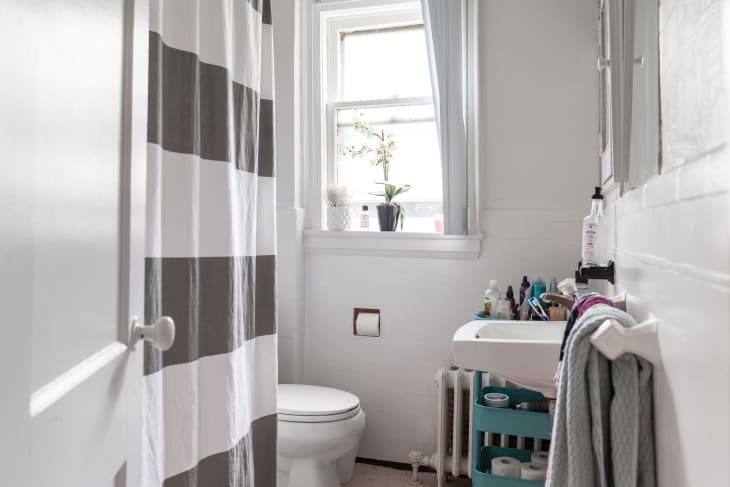This Simple, Sustainable Trick Helps Me Take Better Showers
In elementary school, I watched a video about a goldfish running out of water in its bowl because a kid left thefaucet runningwhile brushing his teeth. I’ve been careful about my water usage ever since.
I diligently close the faucet for the two minutes I spend brushing. I also keep showers short.
For more content like this follow
But one thing that felt out of my control was the water wasted while I waited for the shower to warm up. If you let the water flow for one minute before getting in, that’s 2.1 gallons down the drain. That’s the goldfish’s entire bowl!
It was especially painful for me to watch water flow down the drain when I lived in a sixth-floorapartment in Manhattan. It took a good five minutes for the water from the boiler in the basement to make its way to my shower. The issue is that the farther your shower is from the water heater, the longer it will take for warm water to travel through the pipes. In my current house, our main shower is two floors up from the water heater.
I’ve found the most efficient way is for me to take my shower right after my husband takes his. That way the water only needs to warm up once. But our shower schedules don’t always line up.
I mentioned this to my dad, aretired plumber. He taught me a different trick: Don’t go immediately from bed to shower.In order for your shower to reach a comfortable temperature, the water from the heater has to work its way through the pipes, pushing yesterday’s now-cooled water out first.
Instead of hopping right into the tub, get up and do water-related tasks around the house to get the water moving. As you fill your pet’s water bowl, start coffee, or brush your teeth, use the hot water side of the faucet. The water won’t come out of the faucet hot, but it will get the cold water moving out and the warm water moving in. For best results, use the sinks closest to your shower for these tasks.
I timed it. When I started my day with a shower, it took 58 seconds to reach a tolerable temperature. When I showered after a few hand-washing and dish-rinsing sessions, it took about 30 seconds.
This strategy works well for me since I work from home. But if you can’t wait to bathe, you can still conserve water in the shower. Here are a few other ways:
- Consider a recirculation pump. The device sends cooled water from the pipes back to the water heater to get reheated. Some models even let you schedule it, so the water is ready for you when you wake up.
- Use alow-flow showerheador attach a flow restrictor. The attachment goes between the pipe and your showerhead. It allows you to easily flip a switch to reduce the water flow. This keeps the water warm but reduces the pressure when you don’t need it. If you’re shaving your legs, for example, you can reduce the flow, then switch it back up when it’s time to rinse off. I can confirm that it doesn’t affect the quality of my showers.
- 用一桶水during the warm-up period thenuse the waterfor plants or cleaning tasks.

